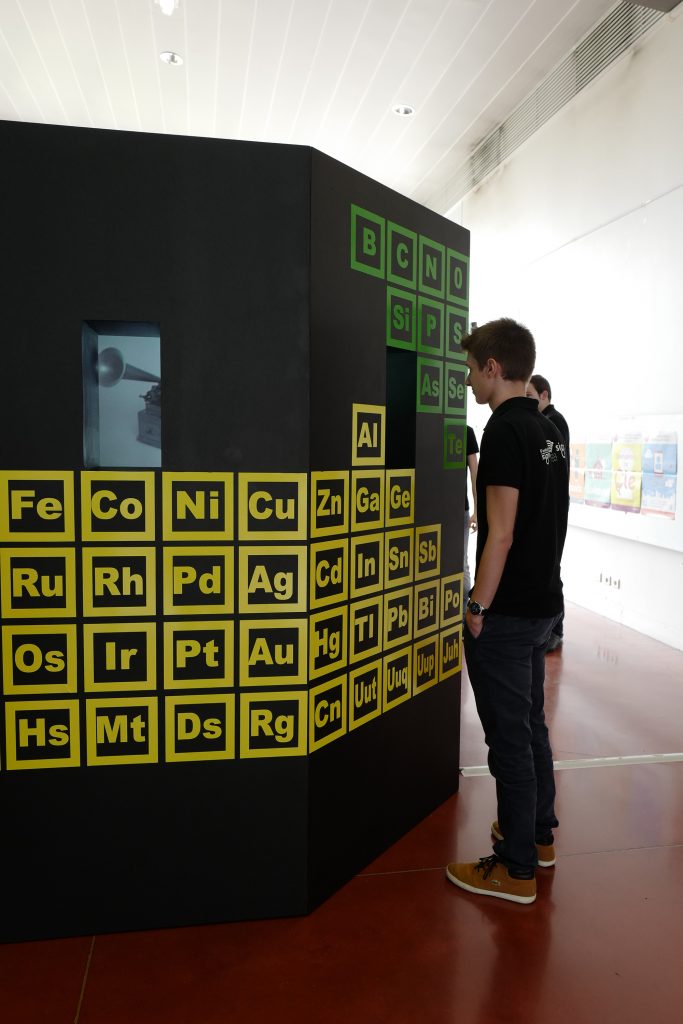This post is also available in: Français (French)
VIDEOFORMES & The University Culture Service present:
VIDEOBAR #58: “Lights in a Box” & “The Elemental Zootrope.”
Multimedia installations by Rêves de science
Tuesday, June 19 | 6:30 pm > 8 pm
Chapelle de l’Oratoire
Free access
Exhibition : June 20 > 22
2 student devices, supervised by Anne-Sophie Emard, with Evelyne Ducrot, Michel Durot and Caroline Lardy:
Lights in boxes – Dreams of science # 3
The installation Lumières en boîtes – Rêves de Science V3, is a device that presents a dissection of obsolete television equipment on which archival images are projected.
The work of the students started from the scientific process that revealed the images through light, via television. New visual proposals, thanks to videomapping, show a chronological frieze from the birth of television to our days. They have made choices in the television memory, which they have staged. The “televisions” are connected by components normally hidden behind the screens (cathode ray tubes, printed circuits…), in the spirit of Tony Cragg’s installations. These components create a visual junction between each decade, to recall the timelines of our schools, in a current, playful and artistic form. from the history and images of the channel that brought and brings the television image, from the 30’s to nowadays. Cardboard screens representing television sets of different shapes according to the era, connected by cables, or other updated components, show archival images from each of the decades. With Vincent Morenas, lecturer in Physics.

The Zootrope of the Elements – Science Dreams # 6
Students from the SIGMA Clermont School, “Innovation and Creativity” course, set up in 2015, the SUC and the teacher in charge of the course, Isabelle Thomas, worked on portraits of scientists. In a device inspired by the zoetrope, at human size, we can see through 8 skylights 8 videos related to the portraits of scientists or experiments chosen by the students: Thomas Edison and the emergence of electricity, mainly the light bulb, Pierre and Marie Curie, known for their work on radioactivity by a Nobel Prize in 1903 and an explanation on the discovery of uranium and radioactivity, Dmitri Ivanovitch Mendeleïev, known for his work on the periodic classification of elements, published in 1869, also named “Mendeleïev’s table”, Stephen Hawking, known for his work on the black holes These portraits and demonstrations are staged with moments from the life of each of the scientists, quotes, sound worlds … Through a trick of editing, the videos create the illusion of a sliding images from one screen to another to strengthen the reference to the zoetrope and encourage the viewer to circulate around the work to discover all the “facets. The walls of the structure are covered with the signs of the periodic table of elements.
The Rêves de sciences program is the most visible and representative element of the links between arts and sciences, implemented in the Arts, Sciences, Techniques, Society and Cinema sectors of the Service Université Culture (SUC), since 2012, in collaboration with the Mission de Cellule de Diffusion de la Culture Scientifique Technique et Industrielle (Mission of the Dissemination of Scientific, Technical and Industrial Culture) and in partnership with VIDEOFORMES, a festival and center for digital arts. It is through images, especially video installations, like cabinets of curiosities of the 21st century that the Dreams of science are proposed. They are worked on in the SUC’s video art workshop, supervised by Anne-Sophie Emard, a video artist, in collaboration with researchers and science laboratories, and with decorators and technicians.